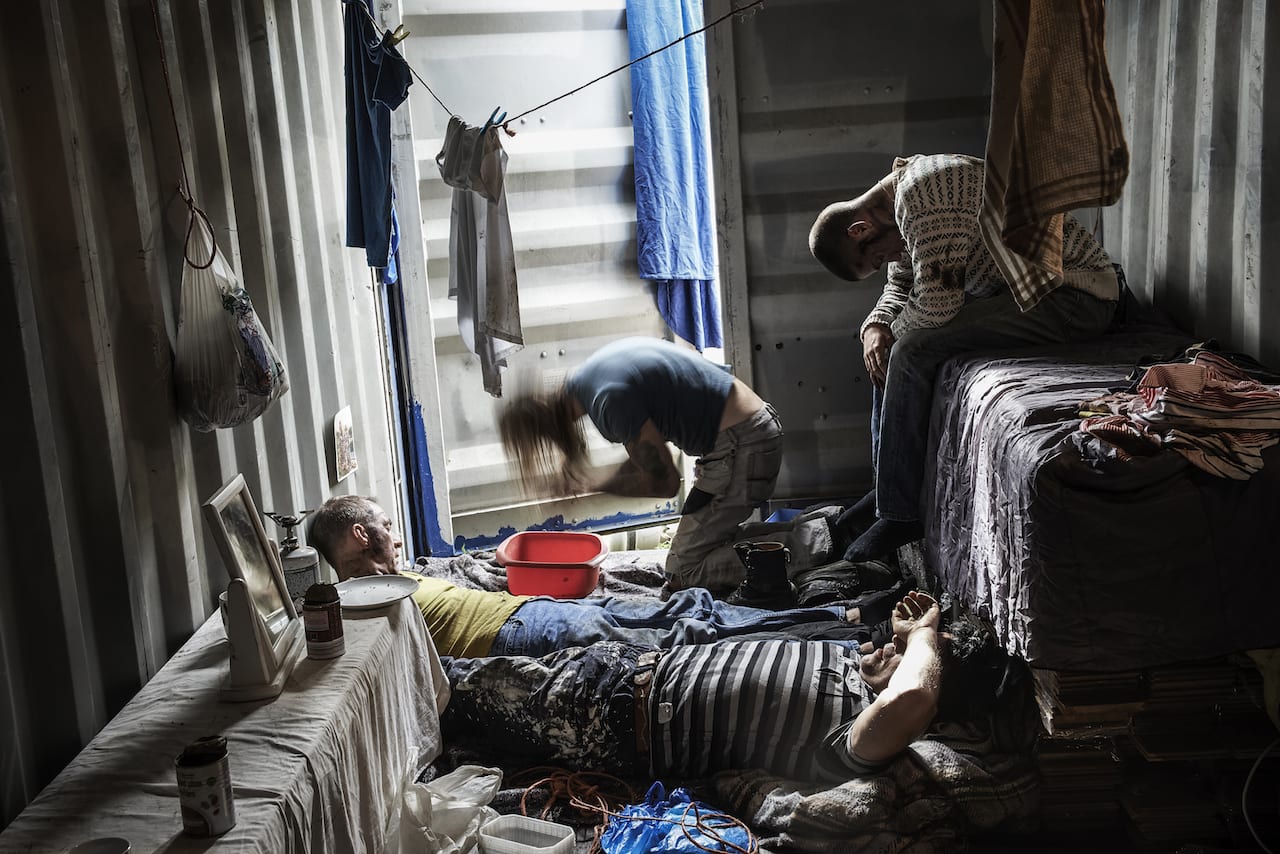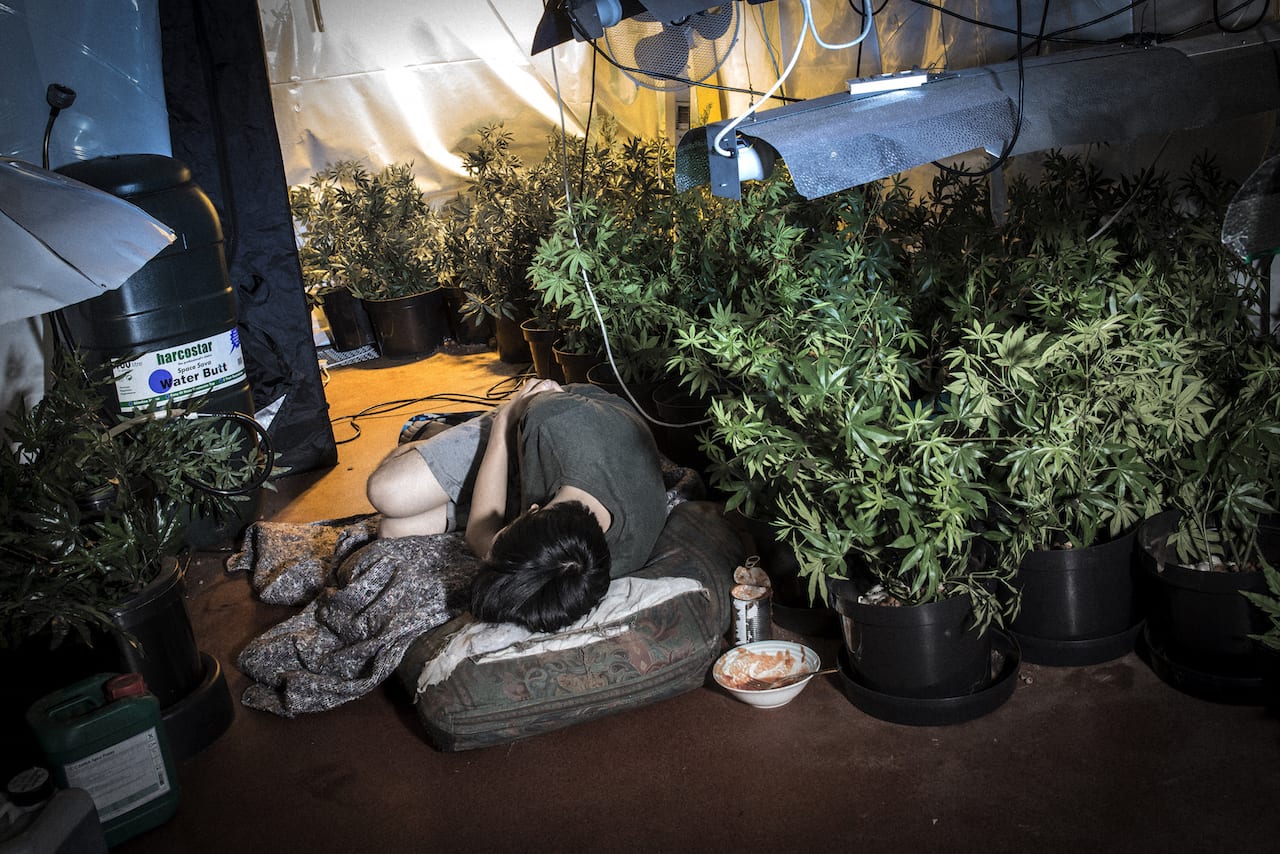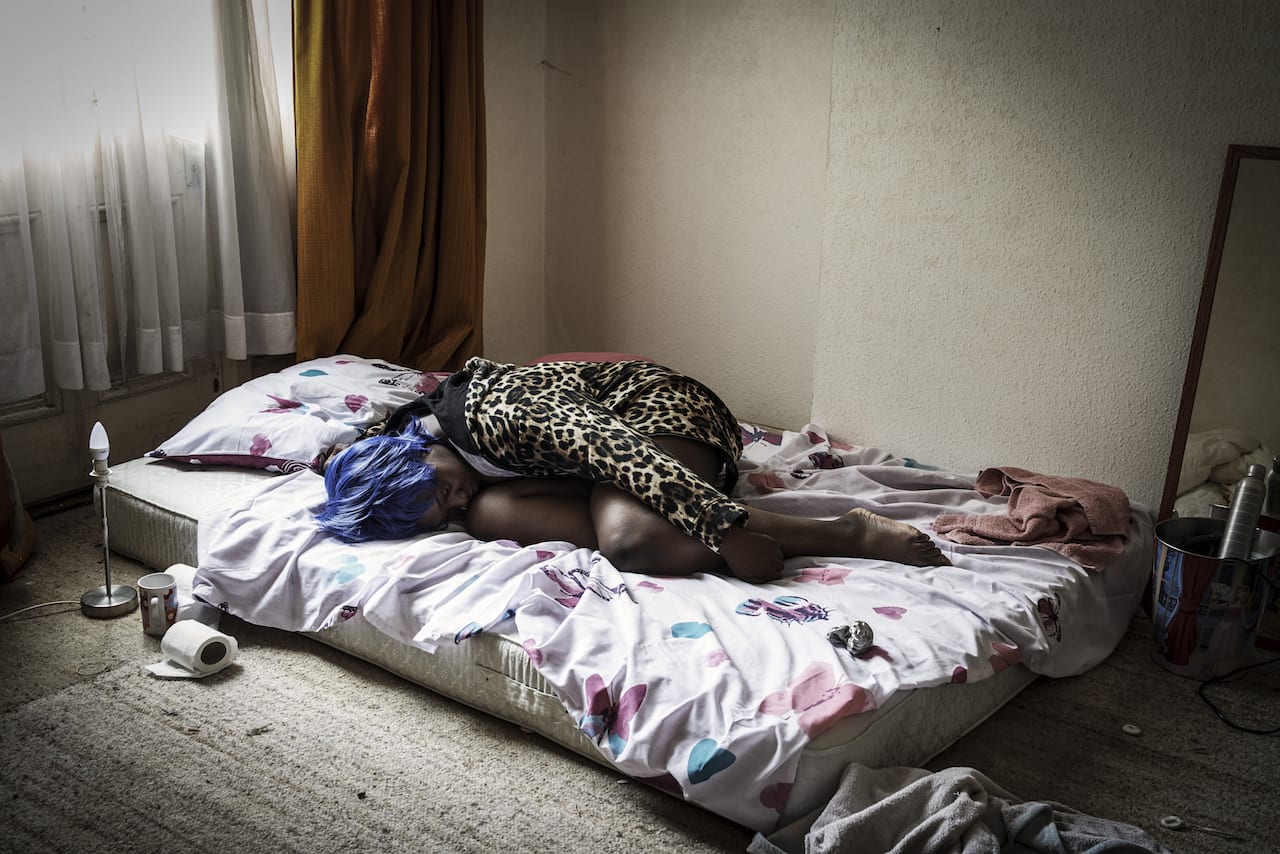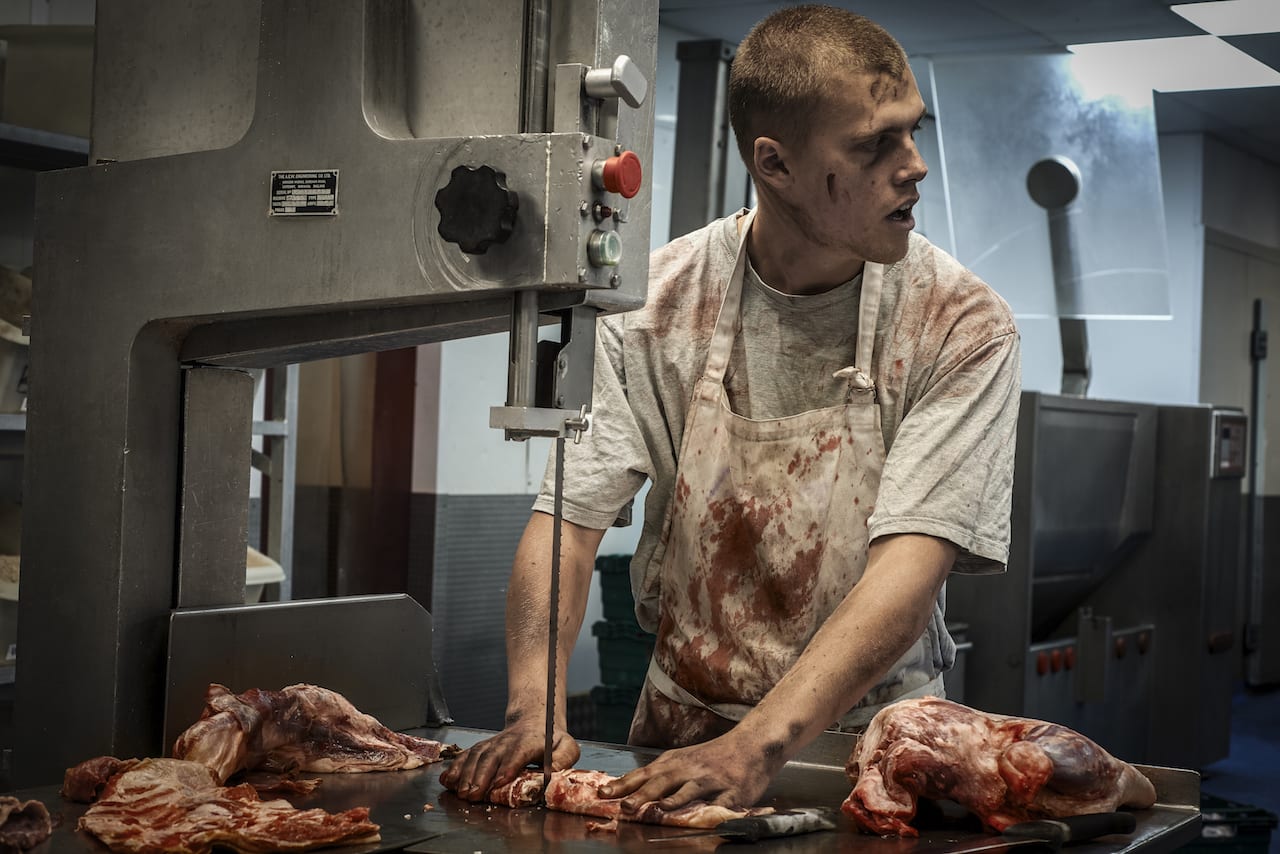Commissioned by the UK’s National Crime Agency, Invisible People is a project by British photographer Rory Carnegie that seeks to raise awareness of modern slavery. While slavery was officially abolished in the UK in 1807, the government estimates that tens of thousands of people are still entrapped by forced labour today. Defined by the Modern Slavery Act of 2015, the term covers victims of human trafficking from both abroad and within the UK, and includes people who are sexually exploited, forced to work in illegal and legal factories and farms, those in domestic servitude, and children coerced into begging, organised theft, and benefit fraud.
Due to the hidden nature of modern slavery Carnegie was unable to show real victims of the crime, instead photographing friends, models and actors in reconstructed scenes. Few faces are shown in the images, but Carnegie wanted to demonstrate that modern slavery is an everyday fact of life, and that we may all have walked past slaves in the street or benefitted from their labour. “I wanted to show that the issue is much more insidious,” says Carnegie. “These victims might not be living in chains, but they are living amongst us.”
He also wanted to create images that were empowering, showing how those who, through no fault of their own have fallen victim to forced labour, attempt to cope. Having previously worked for several years teaching young refugees and covering similar issues in his postgraduate studies, Carnegie has a certain experience with vulnerable people and their depiction.
“I wanted to create images that would show firstly how it felt to be a victim of modern slavery, and secondly to illustrate the coping strategies that they used in dealing with their appalling and disgusting situations,” he says. “One of the most prevalent coping strategies for victims of modern slavery is wishing or imagining themselves as either elsewhere or a different person.”

“The victims of modern slavery are living and working in abject conditions but will, if they can, hold on to some degree of dignity,” he adds. “In the photograph of the men that are living in the container, it shows them in cramped conditions with no running water and barely sufficient room to lie down, but they have tried in some way to domesticate. There are hooks and lines on which to hang clothes and there is a mirror with which they can both manage and monitor their appearance. These may appear to the everyday person small and insignificant issues, but they are in fact crucial to the mens’ continued existence.”
By recreating the lives of these ‘invisible people’, the photographs aim to draw attention to the signs of modern slavery and ultimately shed light on a hidden and complex crime that is shockingly close to home. Having started in London, the show is set to tour around the UK, visiting cities – including Glasgow, Plymouth, Bristol, and another slot in London – where there is a high known incidence of modern slavery.
Invisible People is on show at: Bristol, Centre Promenade, Broad Quay, 13/14 January; Manchester, Market Street, 20/21 January; Belfast, Writer’s Square, 27/28 January; Coventry, Lady Godiva statue, 3/4 February; Plymouth, Piazza, 10/11 February; Lincoln, Cornhill, 17/18 February; Cardiff, Churchill Way, 24/25 February; Glasgow, George Square, 3/4 March; London, Westminster Abbey, 10/11 March. https://www.rorycarnegie.com/ https://www.nationalcrimeagency.gov.uk/news/1267-nca-s-invisible-people-exhibition-launches




